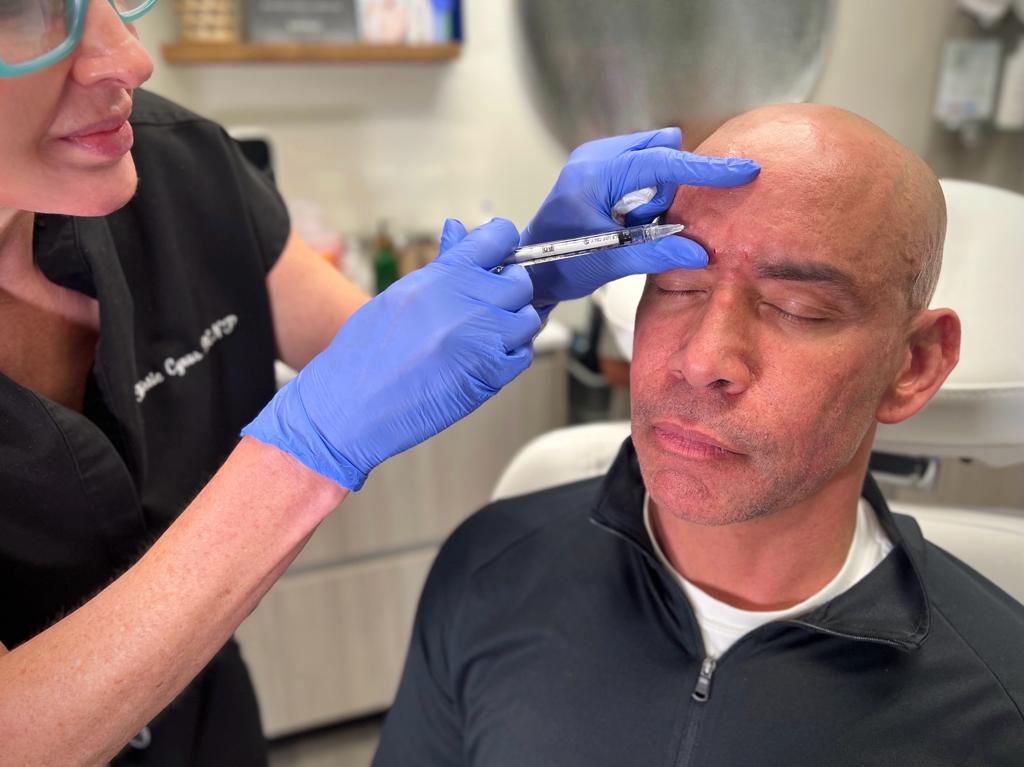
Introduction
Chronic migraines can be debilitating, impacting one's daily life and overall well-being. For many individuals, traditional treatment options may fall short in providing adequate relief. However, there's a surprising solution gaining traction - Botox. In this article, we'll explore how Botox, commonly known for its cosmetic applications, has emerged as a promising treatment for chronic migraines.

Understanding Chronic Migraines
Chronic migraines go beyond occasional headaches; they are characterized by persistent, intense headaches that may occur as often as 15 or more days a month. They are frequently one-sided or may occur anywhere or all over the head, neck, and face. The symptoms often include throbbing pain, sensitivity to light and sound, and nausea. This condition significantly affects the quality of life for those who suffer from it. Several triggers that may lead to a migraine attack include a drop in estrogen levels (pre-menstruation), alcohol use, stress, cold weather fronts, and sleep deprivation. Multiple studies and patient-based epidemiological surveys suggest that migraines are a multifactorial disorder, caused by a combination of genetic and environmental factors. Several specific genes have been identified and associated with migraines.
Conventional Treatment Options
Traditional migraine treatments typically involve medications, ranging from pain relievers to preventive drugs. While these methods provide relief to some extent, they come with limitations and side effects. Many individuals seek alternative solutions due to the challenges associated with conventional treatments or simply want a multi-pronged attack in dealing with their migraines.
Botox and its Role in Neurological Relief
Botox, short for botulinum toxin, is well-known for its cosmetic use in reducing wrinkles. Research indicates that Botox also has neurological benefits, affecting nerve signaling and neurotransmitter release. This unique property has led to its exploration as a therapeutic option for chronic migraines and other neuropathic issues.
Administering Botox for migraines involves a series of injections strategically placed around the head and neck. The toxin temporarily paralyzes specific muscles and blocks pain signals. While the idea of injecting a toxin might sound intimidating, the procedure is minimally invasive and generally well-tolerated, not much different than cosmetic Botox. Patients usually undergo Botox treatments every 12 weeks. When scheduled regularly, Botox can play a powerful role in preventing migraines. Regular Botox treatments have ben shown to reduce the frequency and severity of migraine episodes.
Non-Surgical Approaches to Migraine Relief
Beyond Botox, non-surgical alternatives for migraine relief exist. Most are behavioral therapies that focus on increasing stress tolerance while decreasing perceived stress, such as: biofeedback, education, relaxation, mindfulness/prayer, weight reduction and exercise. Another promising treatment is acupuncture. Comparing the effectiveness of Botox to these options helps individuals make informed decisions based on their preferences and medical history. Often, these are synergistic and can be incorporated into a holistic approach to migraine prevention.
Conclusion
In conclusion, the surprising solution to your chronic migraines might just be Botox. Real-life stories from individuals who have undergone Botox treatments for headaches offer valuable insights. Personal testimonials highlight the effectiveness of Botox in headache management. Its neurological benefits, coupled with its efficacy in headache management, make it a compelling option for those seeking relief. Traditional treatments have their place but an innovative holistic approach including Botox could be a game-changer for individuals struggling with chronic migraines.
FAQ
What is Botox, and how does it help with chronic migraines?
- Botox, or botulinum toxin, known for cosmetic use, exhibits neurological benefits. Administered through injections, it temporarily paralyzes specific muscles and blocks pain signals, effectively reducing the frequency and severity of chronic migraines.
How often do Botox treatments for migraines occur?
- Patients usually undergo Botox treatments every 12 weeks. Regular, scheduled treatments have been shown to play a powerful role in preventing migraines.
What distinguishes chronic migraines from occasional headaches?
- Chronic migraines involve persistent, intense headaches occurring 15 or more days a month. They often come with symptoms like throbbing pain, sensitivity to light and sound, and nausea, significantly impacting the quality of life for sufferers.
Are there non-surgical alternatives for migraine relief?
- Yes, various non-surgical approaches exist, including behavioral therapies like biofeedback, education, relaxation, mindfulness/prayer, weight reduction, exercise, and acupuncture. These can be integrated into a holistic approach to migraine prevention.
What are the genetic and environmental factors contributing to migraines?
- Migraines are considered a multifactorial disorder, influenced by a combination of genetic and environmental factors. Specific genes have been identified and associated with migraines, and triggers may include hormonal changes, alcohol use, stress, weather fronts, and sleep deprivation.


